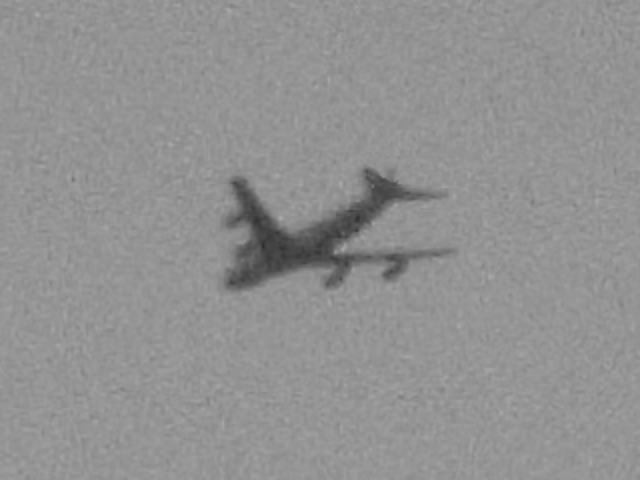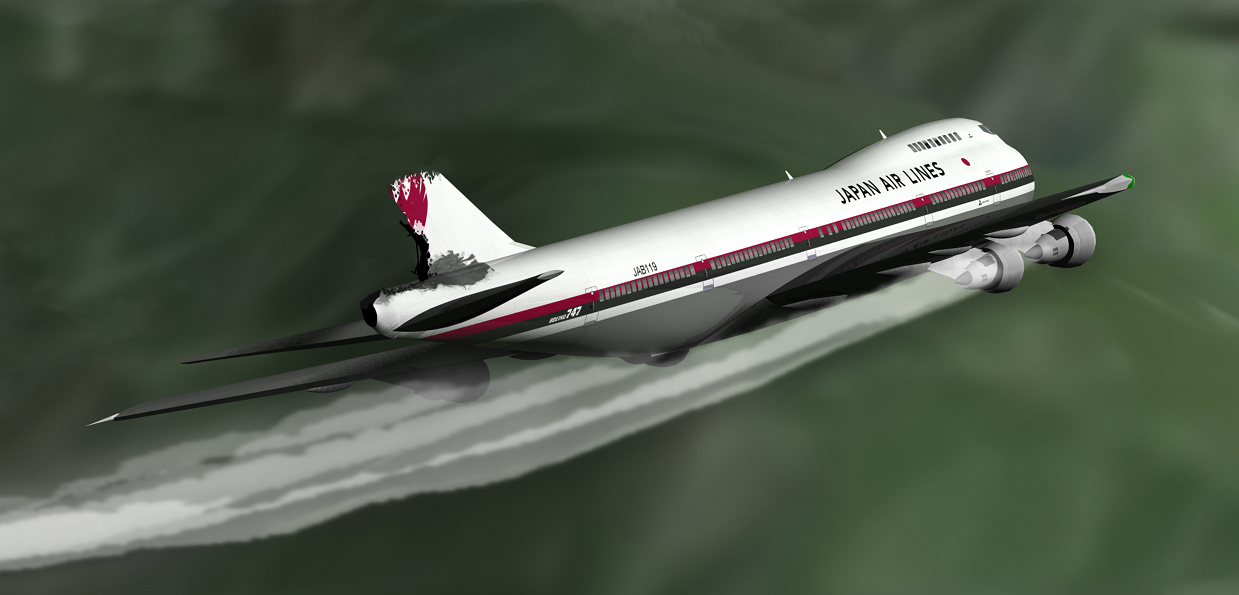
12 August 1985: The worst accident involving a single aircraft occurred when a Boeing 747 operated by Japan Air Lines crashed into a mountain in the Gunma Prefecture, killing 520 persons. There were just 4 survivors.
JAL Flight 123 was a Boeing 747-146SR, registration JA8119. It departed Tokyo International Airport enroute Osaka International Airport. There were 15 crewmembers, led by Captain Masami Takahama, with First Officer Yutaka Sasaki and Second Officer Hiroshi Fukuda. There were 509 passengers aboard.
Flight 123 lifted off at 6:12 p.m., 12 minutes behind schedule. 12 minutes after takeoff, as the 747 was at its cruising altitude, the fuselage rear pressure bulkhead suddenly failed, causing explosive decompression of the cabin. Cabin air then rushed into the unpressurized tail section. The resulting overpressure caused a failure of the APU bulkhead and the support structure for the vertical fin. The airliner’s vertical fin separated from the fuselage. All four of the 747’s hydraulic systems were ruptured. The hydraulic system was quickly depleted, leaving the crew unable to move any flight control surfaces.

Control of the airplane began to quickly deteriorate and the only control left was to vary the thrust on the four turbofan engines. The flight crew began an emergency descent and declared an emergency.
For the next 32 minutes, JA8119 flew in large uncontrolled arcs. The 747 rolled into banks as steep as 60°, and at one point, the nose pitched down into a dive reaching 18,000 feet per minute (91 meters per second). The crew was able to bring the 747 back to a nose-high attitude at about 5,000 feet (1,524 meters), but again lost control. At 6:56 p.m., JAL 123 disappeared from air traffic control radar.

The airliner struck a ridge on 1,978.6 meter (6,491.5 feet) Mount Takamagahara at 340 knots (391 miles per hour, or 630 kilometers per hour), then impacted a second time at an elevation of 5,135 feet (1,565 meters). The aircraft was totally destroyed.
The four survivors had been seated in the last three rows of the airliner, though their exact seat assignments have not been determined. Several others actually survived the impact but died from their injuries and exposure before they could be rescued.
Investigation of the accident determined that the 747 had previously been damaged when its tail struck the runway during a landing, 2 June 1978. The rear pressure bulkhead had cracked as a result of the tail strike, but was repaired by a team of Boeing technicians. After the crash, it was discovered that the repair had not been correctly performed. Boeing engineers calculated that it could be expected to fail after 10,000 cycles. It was on the 12,219th cycle when the bulkhead failed.
Boeing 747-146SR JA8119 had accumulated a total of 25,030 flight hours by the time of the accident, on 18,835 flights.

© 2017, Bryan R. Swopes
Good Afternoon. I hope this catches up with you.
This FAA Website may be of some use to you in research:
http://lessonslearned.faa.gov/ll_main.cfm?TabID=1
Lessons Learned from Aircraft Accidents
Thanks, Kevin. I do visit it on occasion.
I’ve read many articles about this horrific disaster. JAL paid out a lot of money to the survivors and families of those who died. Several JAL personnel killed themselves due to shame and Japanese custom. Not once have I read the response from Boeing as their incorrect repair led directly to this loss of life. Was there any apology? Was there ever any financial contribution made? It would be interesting to learn.
From what TDiA has found, Boeing publicly accepted responsibility for the accident, but JAL paid out at least ¥780,000,000 as “condolence money.” In Japan, this was not considered as an admission of liability. (One source has stated that Boeing actually paid 80% of this money.) Boeing requested that any civil trials be held in Japan. JAL lost more than 20% of its passengers the following year. There have been rumors that Boeing provided JAL with a replacement 747, but if so, TDiA has not found anything to confirm this.
Hello Bryan,
As always, great article. I am astounded that 4 people survived this. Is there any info on where they were in the aircraft? I find it incredible that anyone could survive a crash at that speed.
Hi, Pete. Thank you. I was not able to find their precise seat assignments, but the four survivors were located in the last three rows of the 747. Several others had actually survived the crash but died of exposure before they could be rescued. I have added this information to the article.